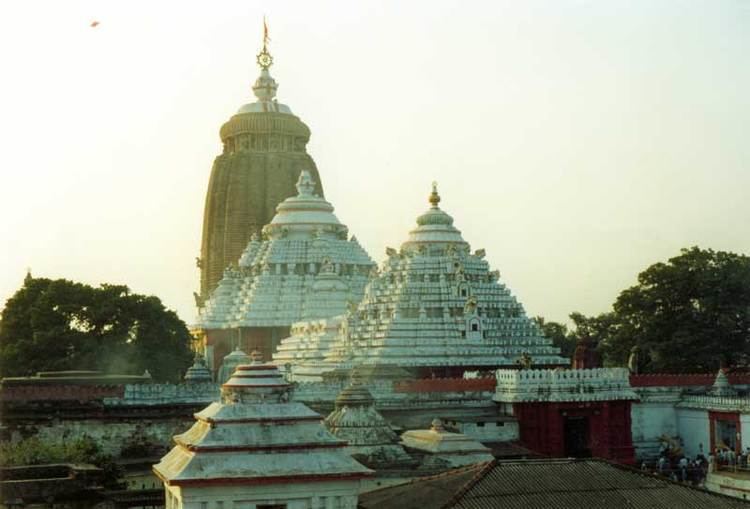Religion Hinduism 1178–1198 Ananga Bhima Deva II | Government Monarchy | |
 | ||
Capital Mukhalingam/KalinganagarCuttack Languages OdiaTamil (under Chola rule) 1078–1147 Anantavarman Chodagangadeva Similar Western Ganga dynasty, Paramara dynasty, Kakatiya dynasty | ||
The Eastern Ganga dynasty (Odia: ଗଙ୍ଗ ବଂଶ ଶାସନ) or Chodaganga dynasty was a Hindu power on the Indian Subcontinent. The Eastern Gangas reigned from Kalinga and their rule consisted of the whole of the modern-day Indian state of Odisha as well as parts of West Bengal, Andhra Pradesh and Chhattisgarh from the 11th century to the early 15th century. Their capital was known by the name Kalinganagara, which is the modern Srimukhalingam in Srikakulam District of Andhra Pradesh bordering Odisha which was earlier part of Ganjam District of Odisha. Today, they are most remembered as the builders of the Konark Sun Temple an UNESCO World Heritage site at Konark, Odisha.
Contents
The dynasty was founded by King Anantavarman Chodaganga, descendents of the Western Ganga Dynasty that rule southern parts of modern Karnataka and the Chola dynasty. The Eastern Ganga rulers were matrimonially related to the Chola empire and Eastern Chalukyas, Their currency was called Ganga fanams and was greatly influenced by the Chola empire and Eastern Chalukyas of southern India. Anantavarman was a religious person as well as a patron of art and literature. He is credited for having built the famous Jagannath Temple of Puri in Odisha. King Anantavarman Chodagangadeva was succeeded by a long line of illustrious rulers such as Narasimha Deva I (1238–1264).
The rulers of Eastern Ganga dynasty defended their kingdom from the constant attacks of the Muslim rulers. This kingdom prospered through trade and commerce and the wealth was mostly used in the construction of temples. The rule of the dynasty came to an end under the reign of King Bhanudeva IV (1414–34), in the early 15th century.
Background
After the fall of Mahameghavahana dynasty, Kalinga was divided into different kingdoms under feudatory chiefs. Each of these chiefs bore the title Kalingadhipathi (Lord of Kalinga). The beginnings of what became the Eastern Ganga dynasty came about when Indravarma I defeated the Vishnukundin king, Indrabhattaraka and established his rule over the region with Kalinganagara (or Mukhalingam) as his capital, and Dantapura as a secondary capital. The Ganga kings assumed various titles viz. Trikalingadhipathi or Sakala Kalingadhipathi (Lord of three Kalinga or all three Kalingas namely Kalinga proper (South), Utkal (North), and Kosal (West)).
Mukhalingam near Srikakulam of Andhra Pradesh bordering Orissa has been identified as Kalinganagara, the capital of the early Eastern Gangas.
After the decline of the early Eastern Gangas reign, the Chalukyas of Vengi took control of the region. Vajrahastha I, a descendant of the early Eastern Ganga dynasty took advantage of the internal strife and revived the power of the Ganga dynasty. It was during their rule that Shaivism took precedence over Buddhism and Jainism. The magnificent Madhukeshwara temple at Mukhalingam was built during this period.
In the 11th century, the Cholas brought the Ganga Kingdom under their rule.
Intermarriage
The Eastern Gangas were known to have intermarried with the Cholas as well as Chalukyas. The early state of the dynasty may have started from the early 8th century.
Anantavarman Chodaganga
The dynastic founding started with Anantavarman Chodaganga. He is believed to have ruled from the Ganges River in the north to the Godavari River in the south. This laying the foundation of the Eastern Ganga Dynasty. Also during his rule, the great Jagannath Temple at Puri was being built. He assumed the title of Trikalingadhipathi (ruler of the three Kalingas which comprise Kalinga proper, Utkal north and Koshal west) in 1076. Resulting in him being the first to rule all three divisions of Kalinga.
Intrudes
Rajaraja III ascended the throne in 1198 and did nothing to resist the Muslims of Bengal, who invaded Orissa in 1206. Rajaraja's son Anangabhima III, however, repulsed the Muslims and built the temple of Megheshvara at Bhuvaneshvara. Narasimhadeva I, the son of Anangabhima, invaded southern Bengal in 1243, defeated its Muslim ruler, captured the capital (Gauda), and built the Sun Temple at Konark to commemorate his victory. With the death of Narasimha in 1264, the Eastern Gangas began to decline; the sultan of Delhi invaded Orissa in 1324, and Vijayanagar defeated the Orissan powers in 1356. Narasimha IV, the last known king of the Eastern Ganga dynasty, ruled until 1425. The "mad king," Bhanudeva IV, who succeeded him, left no inscriptions; his minister Kapilendra usurped the throne and founded the Suryavamsha dynasty in 1434–35.
Legacy
The Eastern Gangas were great patrons of religion and the arts, and the temples of the Ganga period rank among the masterpieces of Hindu architecture.
Rulers
- Indravarman (496–535)
- Devendravarman IV (893-?)
- Vajrahasta Anantavarman (1038-?)
- Rajaraja I (?-1078)
- Anantavarman Chodaganga (1078–1150)
- Ananga Bhima Deva II (1178–1198)
- Rajaraja II (1198–1211)
- Ananga Bhima Deva III (1211–1238)
- Narasimha Deva I (1238–1264)
- Bhanu Deva I (1264–1279)
- Narasimha Deva II (1279–1306)
- Bhanu Deva II (1306–1328)
- Narasimha Deva III (1328–1352)
- Bhanu Deva III (1352–1378)
- Narasimha Deva IV (1379–1424)
- Bhanu Deva IV (1424–1434)
